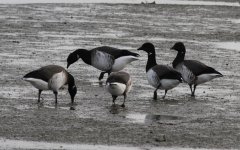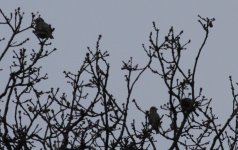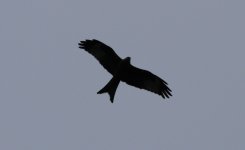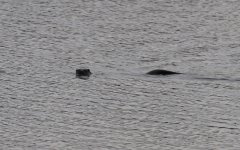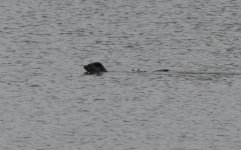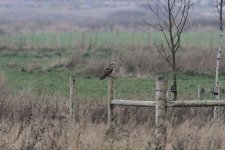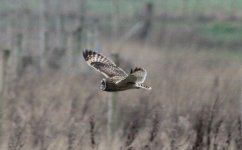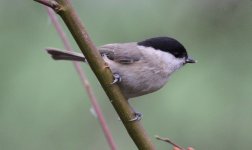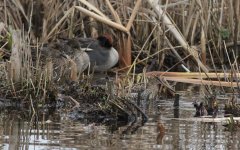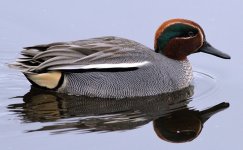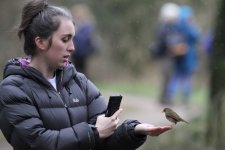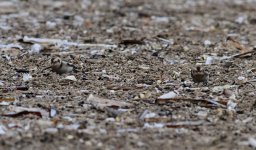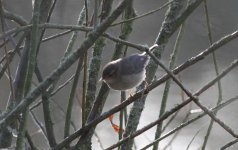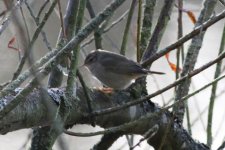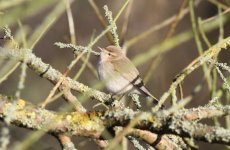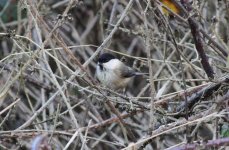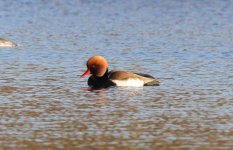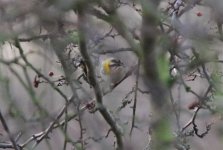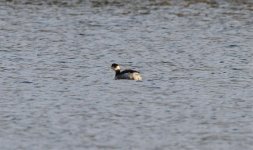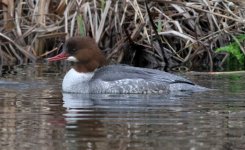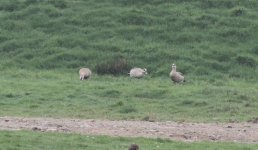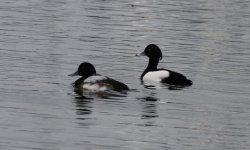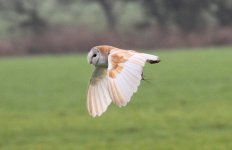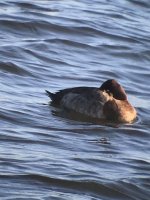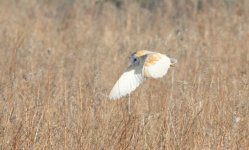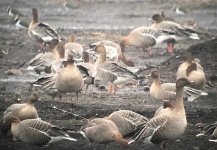2nd January - Anglesey and North Wales
Another full days birding saw myself and three other Fylde birders heading 2.5 hours to Anglesey, a prime birding location at this time of year with a number of species that are hard to come by in Lancashire.
We took our traditional anti-clockwise route round Holy Island, starting at Holyhead Harbour where 2 winter plumage
Black Guillemot and a single
Guillemot were quickly located in the inner harbour, although the outer harbour was almost devoid of birds despite reports in the previous days of all three diver species. Moving round to South Stack a distant pair of
Chough were picked out flying around the lighthouse, their calls carrying up the cliffs to where we were viewing from. A single
Red-throated Diver and a number of unidentifiable auks were spotted out on the sea.
Our main area of focus was to be the Inland Sea which was as usual absolutely teaming with birds. Viewing first from Four Mile Bridge we had soon notched up an decent list including
Great Northern Diver, 14
Scaup, at least 3
Mediterranean Gulls and 75
Pale-bellied Brent Geese amongst a range of wildfowl and waders. Our main targets however were to be found at the other end of the strait so we drove round to north side and walked under the embankment to view the larger expanse of water that held the
Black-throated Diver in the company of a second Great Northern Diver and more Mediterranean Gulls. Just over the road and railway embankment at Beddmanarch Bay our other targets were waiting for us, the immature
Long-tailed Duck and at least 3
Slavonian Grebes plus more showy Brent Geese and a variety of waders on the extensive mud flats exposed by the low tide.
Since the female Lesser Scaup had left the previous day Llyn Llygeirian we instead headed back onto the mainland, up the impressive Nant Ffrancon valley and then following the Conwy valley north. Here we stopped off at St. Peter's Church at Llanbedr-y-Cennin in the hope of
Hawfinch and after a few fleeting glimpses and flyovers we were eventually rewarded with a single female perched up for a short while. A trio of
Red Kites that appeared overhead meant our final target for the day was nailed, although the grey conditions didn't help with photography as can be evidenced below!
94. Red-breasted Merganser
95. Black Guillemot
96. Guillemot
97. Shag
98. Red-throated Diver
99. Chough
100. Brent Goose
101. Grey Plover
102. Mediterranean Gull
103. Great Northern Diver
104. Greenshank
105. Knot
106. Slavonian Grebe
107. Ringed Plover
108. Black-throated Diver
109. Long-tailed Duck
110. Greenfinch
111. Siskin
112. Great Spotted Woodpecker
113. Red Kite
114. Hawfinch
115. Coal Tit
116. Pheasant
